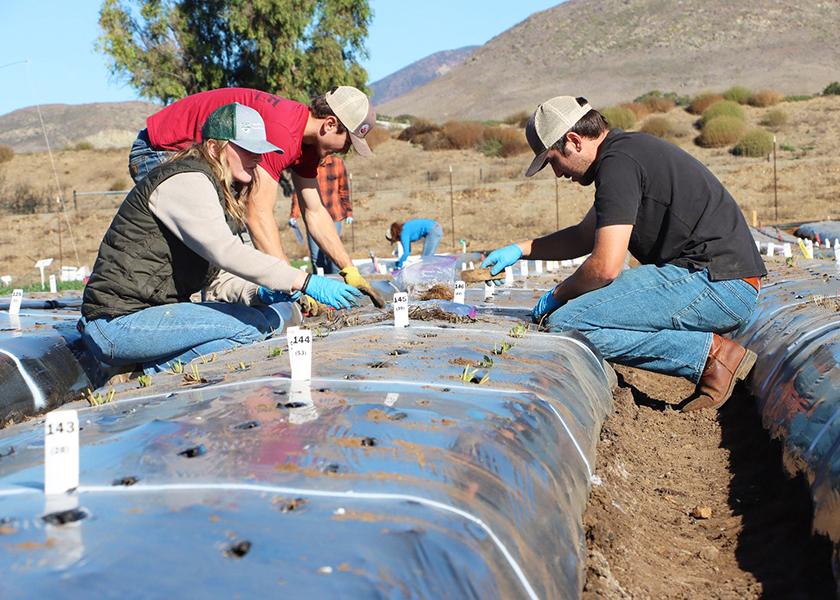Industry innovation flourishes at Cal Poly Strawberry Center

As the Cal Poly Strawberry Center at San Luis Obispo, Calif., approaches its 10th year, the facility continues to unveil numerous wide-ranging research studies that it shares with the California strawberry industry and the scientific world.
The center operates out of a 3,000-square-foot office and entomology lab at a technology park on the Cal Poly campus and now employs 14 people, including entomologists, pathologists and engineers. The center also provides work experience and internships to about 40 students annually, said Gerald Holmes, the center’s director.
The facility explores three program areas: entomology, pathology and automation.
Plans are in the works to expand its automation section by about 1,500 square feet, Holmes said.
The center plays an active role in strawberry industry research, most recently delivering 23 presentations or posters at the 10th North American Strawberry Symposium held in San Luis Obispo in March. NASS is a meeting of strawberry growers, researchers and other industry members from around the world.

An occasion that members of the state’s strawberry industry look forward to every year is the strawberry center’s annual field day, scheduled for Aug. 3 this year. The event hosted nearly 450 people last year, including researchers from strawberry shippers, nurseries and processors as well as suppliers of crop protection tools, fertilizers, agricultural chemicals, irrigation supplies and farm vehicles.
The field day is highlighted by the presentation of results of the year’s work at the center and the latest data from various research projects.
This year, there will be additional exhibitor space, in response to popular demand, Holmes said.
The center is supported by funding from the California Strawberry Commission and external granting agencies, like the USDA and the California Department of Pesticide Regulation, among others.
One of the center’s projects funded by CDPR involves controlling strawberry powdery mildew using UV-C light, Holmes said. It’s a nonchemical technology that exposes plants to UV-C light at night.
“Powdery mildew seems to be especially sensitive to this wavelength of UV light,” Holmes said. “The pathogen does not have the repair mechanisms functioning at night that it does during the day, so the light damages the pathogen, preventing it from growing and reproducing like it normally would.”
Related news: A look ahead — What to expect from California's strawberry season
Disease reduction using UV-C technology was equivalent to that provided by weekly fungicide applications in California and superior to that provided by twice-weekly fungicide applications in Florida, he said.
“A lot of people have been working on this all over the world, and it may become a reality here in California,” Holmes said.
The center also posts videos on its YouTube channel — under the handle @calpolystrawberrycenter.
One video that explains how strawberries are grown in California attracted 330,000 views, Holmes said. A recent addition to the YouTube video library is an animated bar race chart that shows planted acreage by strawberry variety for every year since 1993.
For more information about the center:







